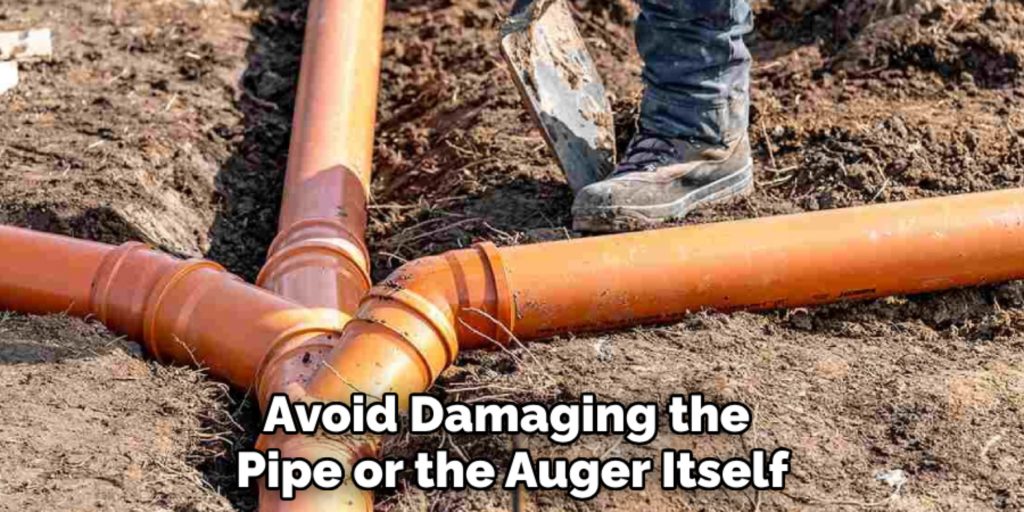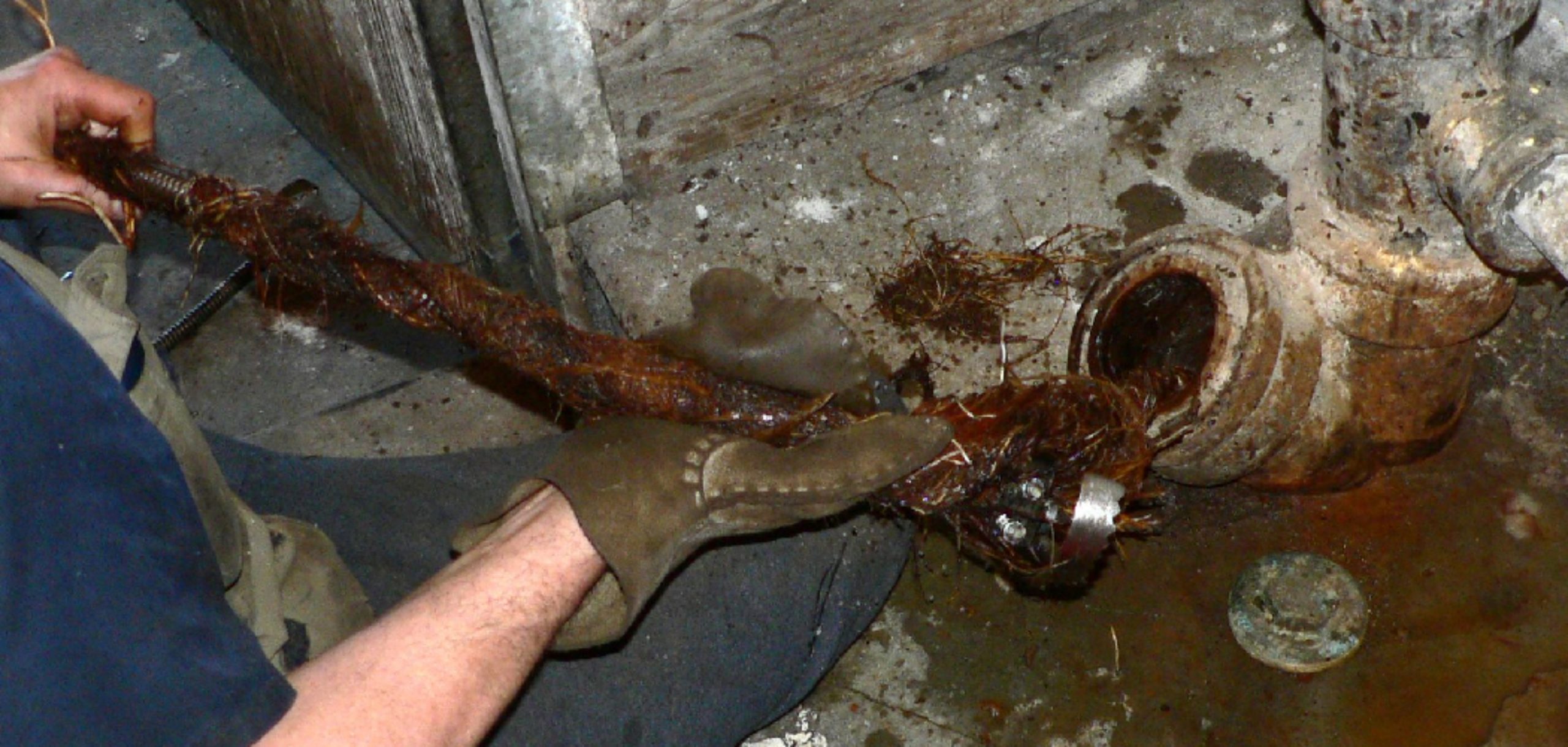Tree roots invading drain pipes can pose significant problems for homeowners, potentially leading to costly repairs and extensive damage if not addressed promptly.

These roots, drawn by moisture and nutrients, can infiltrate even the smallest cracks, causing blockages that can result in slow drainage, gurgling noises, or recurring clogs. Recognizing the common signs of root intrusion is crucial; it may be time to take action if you notice any of these symptoms.
This article will delve into various methods for effectively removing roots from your drain pipe, the essential tools required for the job, and preventive measures to keep your plumbing system free from future intrusions. By understanding how to get roots out of drain pipe, you can maintain the integrity of your drainage system and avoid the complications that arise from untreated root problems.
Why Roots Invade Drain Pipes
Moisture Attraction
Roots are fundamentally drawn to moisture, a vital resource for any plant’s survival. Drain pipes often serve as a convenient source of this moisture, especially when there are small cracks or leaks present. As the water seeps out, it creates an inviting environment for tree roots to explore.
The combination of nutrient-rich water and the warmth of the soil makes drain pipes particularly alluring, allowing roots to penetrate and expand through even the tiniest of openings. This natural behavior of roots can lead to significant blockages and damage if left unchecked, highlighting the importance of routine maintenance to detect early signs of intrusion.
Older Pipes and Vulnerability
Older drain pipes, particularly those constructed from clay or cast iron materials, tend to be more vulnerable to root intrusion. Over time, these pipes can develop cracks or even collapse due to environmental factors and wear and tear. With age, the structural integrity of the pipes diminishes, making them more susceptible to the invasive nature of tree roots.

As roots find these weak points, they can rapidly grow inside the pipe, causing blockage and even extensive damage to the plumbing system. Therefore, homeowners with older piping systems should be especially vigilant in monitoring for signs of root intrusion.
Safety Precautions
When removing roots from drain pipes, safety must be prioritized. Wearing protective gear can significantly reduce the risk of injury or illness. Always wear gloves to protect your hands, safety goggles to shield your eyes from debris, and a mask to avoid inhaling any harmful bacteria or chemical fumes that may be present.
Identify Pipe Material
Understanding the type of pipes you are working with is crucial to prevent unintentional damage during root remarking with is crucial to prevent unintentional damage during the root removal process.
Different materials, such as PVC, clay, or cast iron, require varying levels of care and technique. Knowing your pipe material can help you select the appropriate tools and methods, ensuring the integrity of your plumbing system is maintained.
Working with Chemicals
If chemical root killers are used, it is vital to handle them with care. Always follow the manufacturer’s instructions to avoid causing harm to your pipes or the surrounding vegetation. Improper usage can lead to further damage, making the situation worse rather than resolving the issue.
Tools and Materials Needed
Effective root removal from drain pipes requires specific tools and materials tailored to the job. Below is a breakdown of essential tools and available chemical solutions.

Essential Tools
- Drain Snake or Auger: A flexible tool that reaches deep into the pipes to break apart and remove root blockages.
- High-Pressure Water Jet: Utilises a powerful jet of water to flush away roots and debris that may be clogging the pipes.
- Root Saw or Cutter: Designed to cut through thick roots that have infiltrated and entangled within the pipe system.
Chemical Solutions
For those who prefer a chemical approach, options such as chemical root killers are available. Commonly used products include copper sulfate and foaming root killers, which are effective in dissolving roots inside pipes. These chemicals work to eliminate root masses, providing a more straightforward solution to restore proper drainage. Always follow safety guidelines to ensure safe application and effectiveness when handling these substances.
How to Get Roots out Of Drain Pipe: Manual Root Removal Using a Drain Auger
Step 1: Locate the Clog
Identifying the location of the root clog is the first crucial step in the removal process. Begin by checking fixtures for signs of slow drainage or gurgling noises, which may indicate a blockage.
If the signs are present, you can use a plumbing snake or camera inspection tool to probe your drain system. Frequently, root clogs are found near the main sewer line or in areas where trees are in close proximity to the pipe. Inspecting these locations can help you pinpoint the problem area before root removal.
Step 2: Insert the Drain Auger
Once you’ve identified the location of the clog, the next step is to insert the drain auger into the drain pipe. Start by removing any access points, such as a cleanout plug or a drain cover, to allow for easy insertion.
Feed the drill into the pipe slowly, pushing it through until you encounter resistance from the roots. It’s important to maintain a steady pressure while feeding the auger, allowing it to advance deeper into the pipe. Be gentle but firm to avoid damaging the pipe or the auger itself.

Step 3: Break Up and Remove the Roots
With the auger now adequately inserted, the objective is to break apart the roots obstructing the pipe. Rotate the auger’s handle to engage its cutting blade, initiating the cutting process on the roots.
As you rotate, apply pressure to drive the blade further into the root mass; you may feel the resistance gradually lessen as the roots begin to break apart. After cutting through, carefully pull the auger back out of the pipe. It will likely bring with it a tangle of roots and debris. Continue this process as needed, occasionally pulling out and inspecting the attached mass to thoroughly remove obstructions.
Step 4: Flush the Pipe
After successfully breaking up and removing the roots, it’s essential to flush the pipe to eliminate any remaining debris. Run a steady stream of water through the pipe with a garden hose or bucket. This will help wash away any small remnants left from the root removal process, ensuring that your drainage system is clear and functioning properly.
How to Get Roots out Of Drain Pipe: High-Pressure Water Jetting
High-pressure water jetting is an effective method for removing tough root clogs without damaging your pipes. This technique uses highly pressurized water streams to cut through root masses and flush away debris.
For those who prefer not to invest in this specialized equipment, it can be easily rented from local tool supply stores, or you can hire a professional plumber with experience in this technique to perform the service.
Step 1: Hire or Rent a Water Jetting Machine
To begin, determine whether to hire a professional or rent a high-pressure water jetting machine. Rental prices can vary, so it’s worth checking multiple locations for the best deal.
If you opt for a professional, ensure they have a good reputation and experience with root removal. This method is particularly effective against stubborn clogs, as the force of the water can clear away root obstructions while minimizing the risk of damaging the pipes.

Step 2: Insert the Nozzle into the Pipe
Once the water jetting machine is ready, inserting the nozzle into the affected pipe is next. Start by removing any access points, such as cleanouts or drain covers. Carefully position the nozzle at the pipe’s entrance, ensuring it is pointed in the right direction.
With the machine turned on, the nozzle will emit a powerful jet of water that can effectively break apart and flush away the roots lodged within the plumbing system. Always follow the manufacturer’s instructions for optimal results.
Step 3: Remove and Inspect
After completing the water jetting process, inspecting the pipe to verify that all roots have been successfully cleared is crucial. A camera inspection tool can be used to visually assess the inside of the pipe. This step ensures that no remnants remain, allowing you to confirm that your plumbing is functioning properly and is free of obstructions.
Using Chemical Root Killers
Step 1: Choose the Right Product
Selecting the appropriate chemical root killer is vital for effectively managing root blockages while ensuring the safety of your pipes. Products like copper sulfate and foaming root killers are often recommended because they dissolve root masses without causing damage.
Before purchasing any chemical, thoroughly read the product label to understand the usage instructions, recommended applications, and safety precautions. Choosing a product tailored to your specific plumbing needs will enhance effectiveness and minimize risks.

Step 2: Apply the Chemical
To apply the chosen root killer, you usually need to flush it down your toilet or pour it directly into the affected drain. Follow the manufacturer’s instructions regarding the quantity and method of application.
Many products work most effectively when given enough time to act, so consider leaving the chemical in the pipes overnight if recommended. Ensuring that your drains are clear of any previous blockages before application will also improve the root killer’s performance.
Step 3: Monitor and Reapply if Necessary
After applying the chemical solution, it’s important to monitor your drain for any signs of ongoing root growth. Look for indicators such as slow draining or gurgling sounds, which may suggest roots re-entering the system.
If you notice these signs, it may be necessary to reapply the chemical root killer to manage the issue effectively. Regular monitoring and reapplication can help you stay ahead of root problems, particularly if they are a recurring challenge in your plumbing system.
Preventing Future Root Intrusion
Regular Maintenance
To minimize the risk of root intrusion, schedule regular inspections and cleanings of your plumbing system. This is especially important if you have trees near your sewer line or previously encountered root problems. Proactive maintenance can help detect potential issues before they escalate, ensuring your drainage system remains clear.
Tree Root Barriers
Installing physical root barriers can be an effective strategy to protect vulnerable pipes. Often made from metal or heavy-duty fabrics, these barriers can prevent tree roots from encroaching on the sewer lines. Additionally, using slow-release root killers near tree roots can further deter their growth toward your pipelines.
Pipe Replacement or Relining
In cases where pipes are old or damaged, consider replacing them with modern materials like PVC that are more resistant to root intrusion. Alternatively, pipe relining can provide a robust, root-resistant barrier without the need for large-scale excavation, extending the life of your plumbing system while preventing future complications.

Conclusion
In summary, effectively managing root intrusion in drainage systems involves several key methods: manually removing roots with an auger, employing high-pressure water jetting to clear stubborn blockages, and using chemical root killers for ongoing maintenance.
Each approach has its own benefits, and understanding these methods will empower homeowners to address root issues confidently. To prevent future complications, regular maintenance is crucial, along with early intervention at the first sign of root intrusion. By acting promptly, you can significantly reduce the risk of extensive damage to your plumbing system.
If you’re unsure how to get roots out of drain pipe effectively, don’t hesitate to seek professional assistance; this can save you time, money, and stress in the long run. Protect the integrity of your drainage system by implementing these strategies and staying vigilant against potential root problems.

